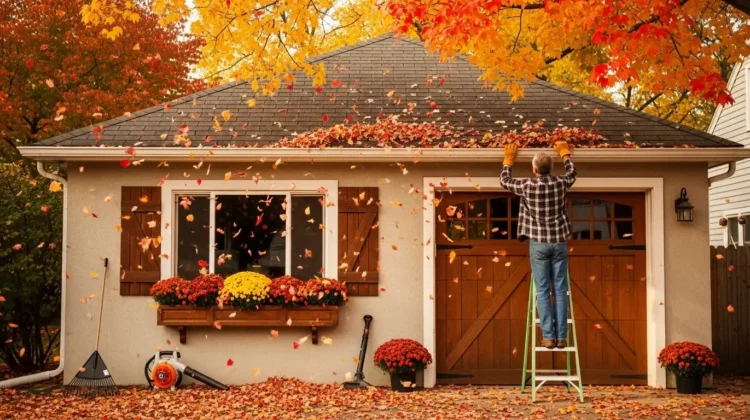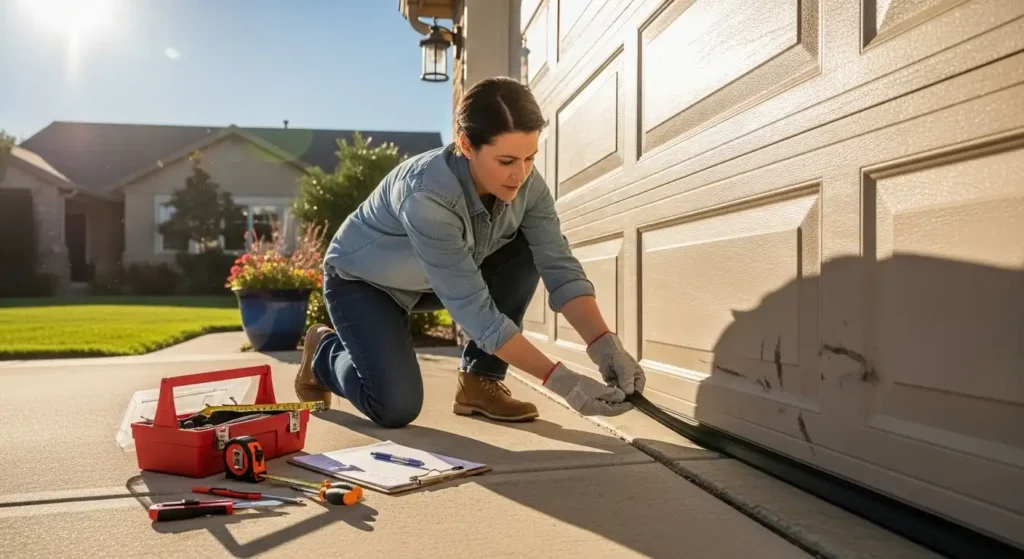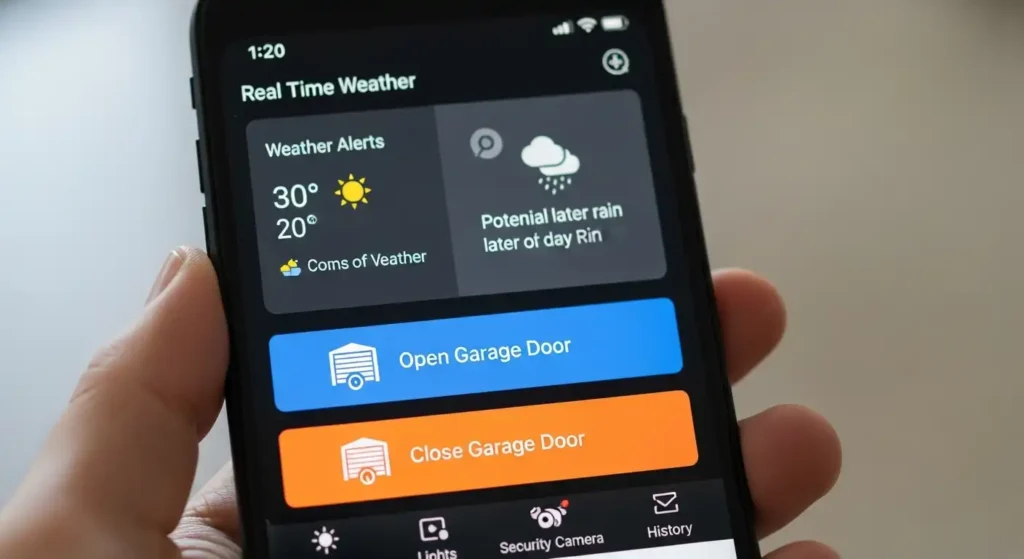
Your garage door is one of the most frequently used and exposed parts of your home. It faces the full impact of every season — from blazing summer heat and heavy rain to freezing winter temperatures. Without proper care, these changing conditions can wear down components, cause malfunctions, and even shorten the lifespan of your door. That’s why garage door seasonal preparation is essential for keeping your system reliable, safe, and weather-resistant all year long.
Why Garage Door Seasonal Preparation Matters

Extreme weather can stress garage doors in different ways. Metal parts expand and contract, seals deteriorate, and moisture can corrode vital components. When ignored, these issues lead to reduced insulation, loud operation, or complete breakdowns. By performing regular, weather-based checkups, you ensure that your door stays smooth, quiet, and energy-efficient no matter the temperature outside.
Routine preparation also prevents unexpected failures that can trap vehicles inside or leave your garage vulnerable to pests and water intrusion. For added safety, homeowners should schedule professional inspections at least twice a year to check the balance, spring tension, and track alignment. If you want to know why routine inspections are crucial, see our article on garage door inspections.
Summer: Protecting Against Heat and Humidity

High temperatures and humidity can cause garage door materials to expand and metal components to warp. Lubricants also dry out faster in heat, leading to noisy or jerky operation. Follow these steps to keep your garage door system working efficiently throughout the summer months:
- Lubricate moving parts: Apply a silicone-based lubricant to hinges, rollers, and springs to reduce friction.
- Inspect weatherstripping: Check for cracks or melted seals that could allow heat and debris inside.
- Keep sensors clean: Dust and humidity can affect the photo-eye sensors, leading to malfunctions.
- Check insulation: Poor insulation allows excess heat into the garage, making it harder to keep adjacent rooms cool. Consider upgrading to an insulated garage door for improved energy efficiency.
Additionally, ensure your garage has proper ventilation. Excess humidity can lead to mold growth and corrosion, especially in coastal areas. Installing a dehumidifier or ceiling vent can help maintain air circulation and protect electrical systems from moisture damage.
Fall: The Best Time for Preventive Maintenance
Fall is an ideal season to perform preventive maintenance before cold weather sets in. Temperatures are mild, making it easier to inspect seals, springs, and moving parts without extreme heat or freezing conditions. Use this time to complete garage door seasonal preparation and address any issues that may have developed during summer.
- Tighten all hardware: The vibration from regular use loosens screws and bolts. Tighten them to maintain stability.
- Replace worn rollers: Worn or cracked rollers increase noise and friction. Replacing them ensures smoother operation.
- Test balance and alignment: An unbalanced door strains the opener and springs. Test it by disconnecting the opener and manually lifting the door halfway — it should stay in place.
- Inspect cables: Look for frayed or rusted cables, which can snap under tension during the colder months.
Winter: Protecting Against Cold and Ice
Cold weather can be particularly harsh on garage doors. Metal contracts, lubricants thicken, and ice can form around seals or in the tracks. These factors cause sluggish operation or complete freezing of the door system. To prevent winter-related damage, consider these maintenance steps:
- Inspect the bottom seal: Replace cracked or brittle seals to prevent snow and moisture from entering.
- Check insulation: Insulated doors not only regulate temperature but also prevent condensation and frost buildup.
- Use cold-weather lubricant: Regular grease thickens in cold temperatures, so opt for a synthetic lubricant designed for winter use.
- Keep tracks clear: Remove ice, salt, and debris to prevent obstructions that could damage the rollers or opener.
If your garage door struggles to open in freezing temperatures, avoid forcing it. This could damage the opener or springs. Instead, use a hair dryer or heat gun to gently melt the ice around the seals and tracks. Regularly removing snow buildup near the base of the door will also prevent water from freezing and sealing the door shut.
Spring: Refresh and Inspect After Harsh Weather
Spring marks the perfect time for a thorough inspection after winter’s wear and tear. Temperature swings and moisture can loosen components, so start the season with a detailed tune-up. A few key steps include:
- Clean the door and tracks: Remove dirt and salt residue accumulated over winter to prevent corrosion.
- Inspect springs: Cold weather can weaken torsion springs. If you notice uneven lifting or squeaking, schedule a professional replacement.
- Repaint or refinish surfaces: Repainting protects against rust and fading, especially on metal or wood doors.
- Check opener batteries: Replace or recharge batteries after winter storage to ensure consistent performance.
Performing garage door seasonal preparation every spring helps catch minor issues before they become major repairs. For extra safety, hire a professional technician to evaluate spring tension, safety sensors, and motor efficiency.
Protecting Your Garage Door from Storms and Hurricanes
For homeowners in regions prone to hurricanes or heavy storms, extra protection is essential. Strong winds can cause significant pressure changes, which may damage panels or even pull doors off their tracks. To safeguard your garage:
- Install reinforced bracing kits: These add strength to the panels and prevent bending during strong winds.
- Seal gaps and cracks: Use weather-resistant caulk to prevent rainwater intrusion and maintain insulation.
- Upgrade to impact-resistant doors: Doors built with steel or composite materials withstand debris impact and pressure changes.
- Ensure backup power: A battery or solar-powered opener keeps your garage functional during outages.
For additional guidance on stormproofing your home, visit the U.S. Department of Energy’s Weatherization Guide for expert recommendations on insulation and weather sealing techniques.
Using Technology for Weather Protection

Smart technology has made it easier than ever to monitor and protect your garage door system. Many modern openers now include weather sensors that automatically adjust operation based on temperature and humidity levels. Others send alerts if excessive moisture, vibration, or motor strain is detected — allowing for proactive maintenance.
Some high-end systems even connect with home automation platforms like Alexa or Google Home to send weather notifications and automatically close doors during storms. This integration adds convenience and ensures your garage door remains secure no matter where you are.
When to Call a Professional
While many maintenance tasks are DIY-friendly, certain repairs — especially those involving springs or cables — should always be handled by professionals. These components are under high tension and can cause serious injury if mishandled. A professional technician can safely inspect, adjust, and replace parts while verifying that your system is weatherproofed and balanced correctly.
If your door makes unusual noises, moves unevenly, or fails to seal properly, it’s best to schedule an inspection right away. Preventive care saves money, ensures safety, and keeps your garage operating smoothly across every season.
Final Thoughts
Performing regular garage door seasonal preparation is one of the best ways to protect your investment and extend your system’s lifespan. Each season presents unique challenges, but with proactive care — from lubrication and insulation to stormproofing and inspections — you can avoid costly repairs and ensure safe operation year-round.
Your garage door is more than an entryway; it’s part of your home’s comfort, safety, and energy efficiency. Taking time to prepare it for the changing seasons will keep your system running smoothly, protect your belongings, and enhance your peace of mind. Stay prepared — your garage door will thank you in every season.
